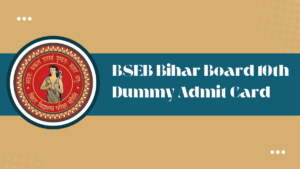NCERT Solutions For Class 12 Microeconomics Chapter 2- Theory of Consumer Behaviour
When preparing for the CBSE Class 12 Economics Board exams, NCERT Solutions is regarded as a book that is incredibly helpful. This study tool has a wealth of information, and the Solutions compiled by the subject matter experts are no exception. This chapter provides a succinct overview of microeconomics.
With the exercises, the NCERT Solution for Class 12 Economics Chapter 2 – Theory of Consumer Behaviour provides a succinct explanation of the topic. Economics is a science that investigates human characteristics that attempt to distribute limited resources so that consumers can be as satisfied as possible, manufacturers can maximize their surplus output, and society can be as comfortable as possible. Making decisions in the face of scarcity or insufficiency is key.
NCERT Solutions For Class 12 Microeconomics Chapter 2: Theory of Consumer Behaviour- Video
Watch the given video explanation for a better understanding of the chapter
Download PDF of NCERT Solutions For Class 12 Microeconomics Chapter 2: Theory of Consumer Behaviour
A variety of vivid examples are included in the NCERT Solutions for Class 12 Economics Chapter 2 to aid in the students’ understanding and speedy learning. Download the PDF
NCERT Solutions For Class 12 Microeconomics Chapter 2: Theory of Consumer Behaviour- Questions and Answers
1. What do you mean by the budget set of a consumer?
A consumer’s budget set is a collection of two or more items that are desirable and within their price range, in specific quantities and combinations. An opportunity set is another name for a budget set.
2. What is budget line?
A budget line shows a consumer’s restrictions when combining two or more products into one purchase within a specific budget. When prices, preferences, or income change, a budget line will also alter. The consumption possibility line is another name for it. It is believed that the consumer will purchase the whole product package.
3. Explain why the budget line is downward sloping.
When a customer has a restricted budget, they can only increase the consumption of one commodity by reducing the use of the other. A budget line slopes downward for this reason.
4. A consumer wants to consume two goods. The prices of the two goods are Rs 4 and Rs 5 respectively. The consumer’s income is Rs 20. (i) Write down the equation of the budget line. (ii) How much of good 1 can the consumer consume if she spends her entire income on that good? (iii) How much of good 2 can she consume if she spends her entire income on that good? (iv) What is the slope of the budget line?
Let us assume that the consumer wants to buy X amounts of Good 1 and Y amount of Good 2. As given, Good 1 is priced at Rs.4 and Good 2 is priced at Rs.5. The income of the consumer is Rs.20.
i) The budget line can be represented using the equation 4X + 5Y = 20
ii) If the consumer spends the entire income on good 1, the value of Y will be zero.
Hence, 4X + 5(0) = 20
X = 20/4 = 5
Therefore, 5 units of Good 1 can be bought.
iii) If the consumer spends the entire income on good 2, the value of X will be zero.
Hence, 4(0) = 5Y = 20
Y = 20/5 = 4
Therefore, 4 units of Good 2 can be bought.
iv) The slope of the budget line can be determined by the units of good 1 that the consumer is willing to give up for gaining equivalent amounts of good 2.
P1/P2 = -4/5 = 0.8
5. How does the budget line change if the consumer’s income increases to Rs 40 but the prices remain unchanged?
When there is an increase in income, consumers can afford more amounts of both good 1 and good 2. Therefore, there will be a shift in the budget line towards the right direction.

6. How does the budget line change if the price of good 2 decreases by a rupee but the price of good 1 and the consumer’s income remain unchanged?
If the price of good 2 decreases, the consumer will be able to consume more amounts of good 2. Therefore, there will be a shift upwards along the vertical axis.

7. What happens to the budget set if both the prices as well as the income double?
If both the prices as well as the income double, there will be no change in the budget set.
8. Suppose a consumer can afford to buy 6 units of good 1 and 8 units of good 2 if she spends her entire income. The prices of the two goods are Rs 6 and Rs 8 respectively. How much is the consumer’s income?

9. Suppose a consumer wants to consume two goods which are available only in integer units. The two goods are equally priced at Rs 10 and the consumer’s income is Rs 40. (i) Write down all the bundles that are available to the consumer. (ii) Among the bundles that are available to the consumer, identify those which cost her exactly Rs 40.
i) The bundles that are available to the consumer are (0,0) (0,1) (0,2) (0,3) (0,4) (1,0) (1,1) (1,2) (1,3) (2,0) (2,1) (2,2) (3,0) (3,1) (4,0)
ii) (0, 4) (1, 3) (2, 2) (3, 1) and (4, 0) are all bundles that costs the customer exactly Rs.40
10. What do you mean by ‘monotonic preferences’?
Monotonic preference is the idea that a buyer who is rational will always prefer “more” of a particular product over “less.” This means that packages that include larger quantities of the products will always make a customer happier.
11. If a consumer has monotonic preferences, can she be indifferent between the bundles (10, 8) and (8, 6)?
There are more of both products in the bundle (10, 8). The bundle (10, 8) would therefore be preferred above the bundle if a customer had monotonic preferences (8, 6). As a result, the consumer cannot choose between the two bundles.
12. Suppose a consumer’s preferences are monotonic. What can you say about her preference ranking over the bundles (10, 10), (10, 9) and (9, 9)?
If the consumer’s preferences are monotonic, the bundles can be ranked as follows:
Rank 1 – (10, 10)
Rank 2 – (10, 9)
Rank 3 – (9, 9)
Bundle (10, 10) will always have a higher preference for the monotonic consumer.
13. Suppose your friend is indifferent to the bundles (5, 6) and (6, 6). Are the preferences of your friend monotonic?
No, the friend’s preferences are not constant. The bundles (5, 6) and (7, 8) would not be indifferent to the friend if they had a monotonic preference (6, 6). They would obviously choose the bundle (6, 6) over the other bundle since it contains more of both products.
14. Suppose there are two consumers in the market for a good and their demand functions are as follows:
d1 (p) = 20 − p for any price less than or equal to 20 and d1 (p) = 0 at any price greater than 20.
d2 (p) = 30 − 2p for any price less than or equal to 15 and d1 (p) = 0 at any price greater than 15.
Find out the market demand function.
According to question,




15. Suppose there are 20 consumers for a good and they have identical demand functions:
D (p) = 10 − 3p for any price less than or equal to and d1 (p) = 0 at any price greater than.
What is the market demand function?


16. Consider a market where there are just two consumers and suppose their demands for the good are given as follows:
Calculate the market demand for the goods.
| p | d1 | d2 |
| 12
3 4 5 6 |
98
7 6 5 4 |
2420
18 16 14 12 |
The market demand can be calculated as follows

17. What do you mean by a normal good?
A normal good is one whose demand rises in direct proportion to the consumer’s income or wage. Take a fruit like an apple, for instance. The demand for apples rises in tandem with rising consumer income.
18. What do you mean by an ‘inferior good’? Give some examples.
Products that are inferior are those for which demand declines as consumer income rises. Consider products like cheap cigarettes, affordable furniture, and low-cost fast food items as examples. Better alternatives to these more expensive products are always available. Therefore, the demand for subpar items declines as consumer affordability rises.
19. What do you mean by substitutes? Give examples of two goods which are substitutes of each other.
Products from the same category that can be used somewhat interchangeably are substitutes. Let’s use the goods tea and coffee as an example. These two goods fulfil comparable demands, belong to the same category of hot beverages, and are similarly priced. Therefore, if the price of tea rises, consumers will switch to coffee, and vice versa.
20. What do you mean by complements? Give examples of two goods which are complements of each other.
Products that complement one another and are typically consumed together are called complements. Tea and sugar or printers and ink cartridges are two examples. The demand for supplementary commodities is also influenced by their prices. For instance, it is likely that the demand for tea would decline dramatically if the price of sugar increased.
21. Explain price elasticity of demand
Price elasticity of demand quantifies how customer demand for a product is impacted by price changes. It is calculated by dividing the percent change in a product’s quantity required by the percent change in its price. The elasticity in this context refers to how responsively demand for the product responds to pricing. For each product, the price elasticity of demand varies.
It can be represented as:

Where
%∆ in Qd = Percentage change in demand for a good
%∆ in P = Percentage change in price of good
Or

Where,
ΔQ = Q2 − Q1, Percentage change in demand for a good
ΔP = P2 − P1, Percentage change in price of good
P = Initial price
Q = Initial quantity
22. Consider the demand for a good. At price Rs 4, the demand for the good is 25 units. Suppose the price of the good increases to Rs 5, and as a result, the demand for the good falls to 20 units. Calculate the price elasticity.
According to the question
| P1 = 4P2 = 5
ΔP = P2 − P1 = 5 − 4 = 1 |
Q1 = 25Q2 = 20
ΔQ = Q2 − Q1 = 20 − 25 = −5 |

23. Consider the demand curve D (p) = 10 − 3p. What is the elasticity at price?


24. Suppose the price elasticity of demand for a good is −0.2. If there is a 5% increase in the price of the good, then by what percentage will the demand for the good go down?

25. Suppose the price elasticity of demand for a good is −0.2. How will the expenditure on the good be affected if there is a 10% increase in its price?

26. Suppose there was a 4% decrease in the price of a good, and as a result, the expenditure on the good increased by 2%. What can you say about the elasticity of demand?

NCERT Solutions For Class 12 Microeconomics Chapter 2: Theory of Consumer Behaviour- FAQs
Que. What is the theory of consumer behaviour in economics?
Ans. Consumer theory is the study of how people make financial decisions based on their personal preferences and financial limitations.
Que. Who are the consumers in an economy class 12?
Ans. Consumer: an economic agent who consumes final goods or services for consideration.
Que. What are the two theories of consumer Behaviour?
Ans. The conventional or old theories and the current or contemporary theories are the two different categories of hypotheses that attempt to explain consumer behaviour.
Que. What are the 4 types of consumer behaviour?
Ans. There are four different forms of consumer behaviour: complex buying behaviour, dissonance reduction, variety seeking, and habitual buying behaviour.











 BSEB Bihar Board Dummy Admit Card 10th 2...
BSEB Bihar Board Dummy Admit Card 10th 2...
 Biology Investigatory Project Class 12- ...
Biology Investigatory Project Class 12- ...
 Hydrocarbon NEET Notes, Check Important ...
Hydrocarbon NEET Notes, Check Important ...

